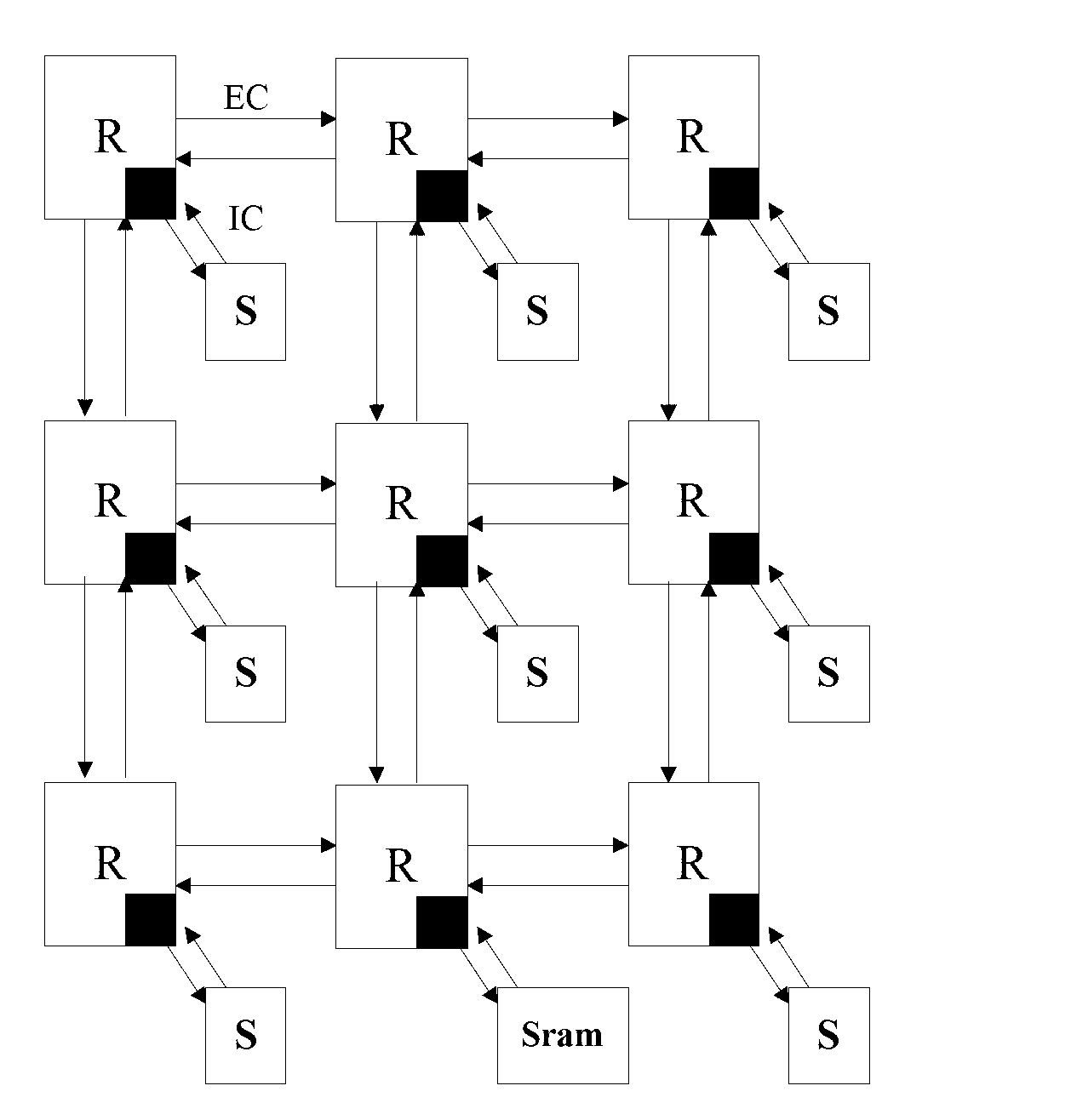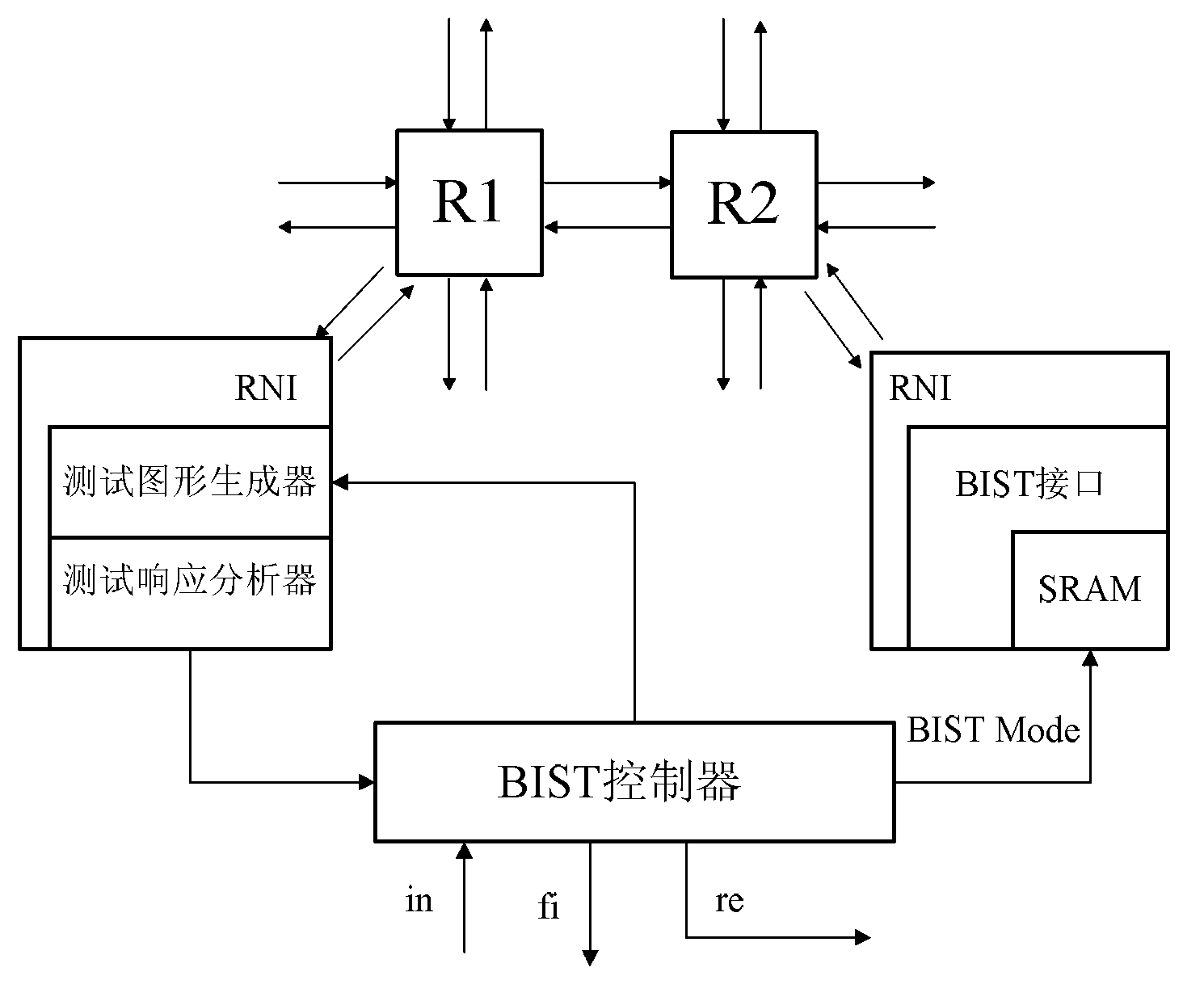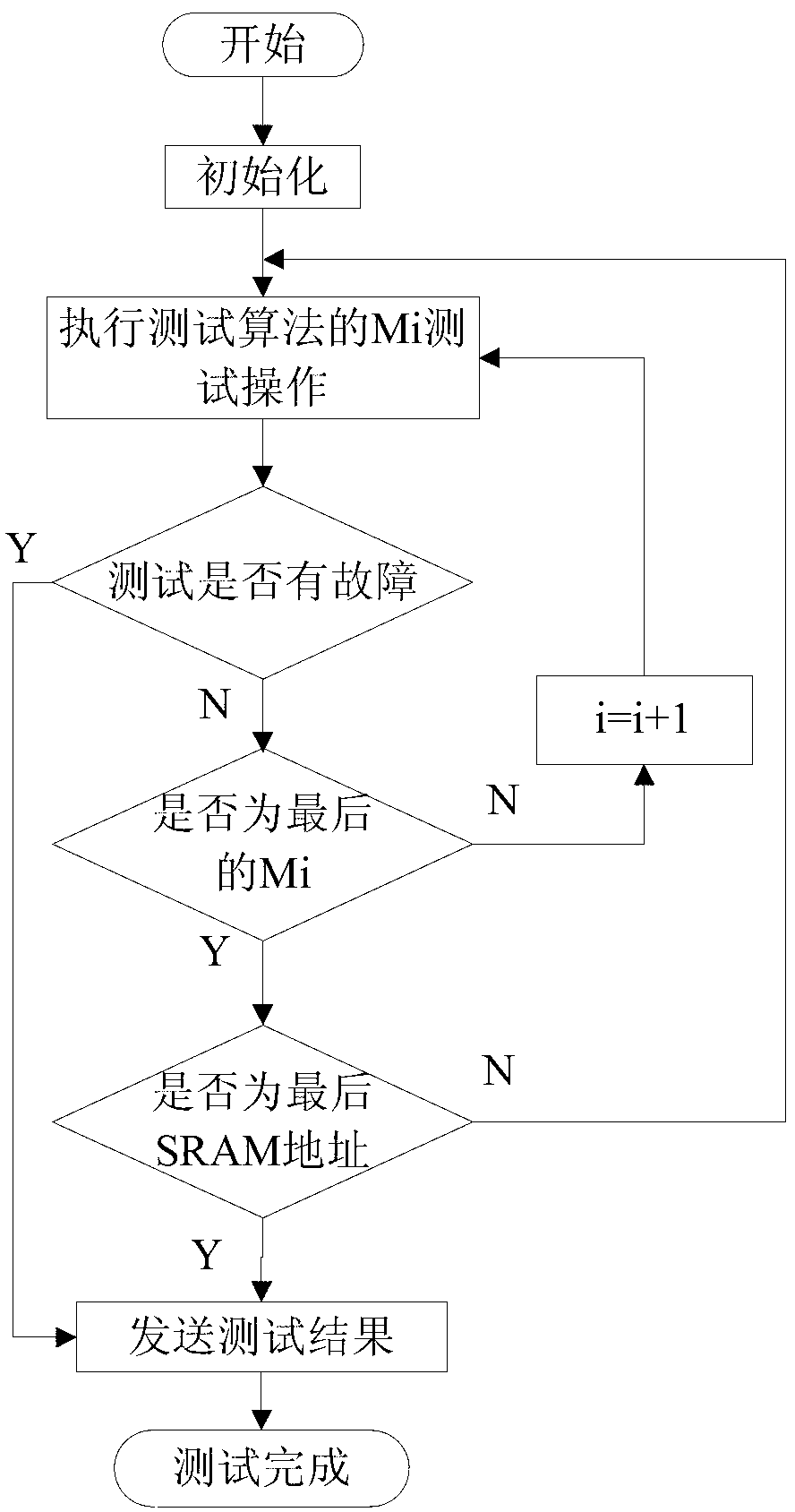Built-in self-test structure and method for on-chip network resource node storage device
A technology of built-in self-test and resource node, applied in the field of built-in self-test structure of on-chip network resource node memory, can solve problems such as the number of users cannot exceed one pair, the bus structure address space is limited, and the communication efficiency is low, so as to save The effect of test cost, shortened test time, and high fault coverage
- Summary
- Abstract
- Description
- Claims
- Application Information
AI Technical Summary
Problems solved by technology
Method used
Image
Examples
Embodiment Construction
[0050] Embodiment of built-in self-test structure of on-chip network resource node memory
[0051] The on-chip network used in the built-in self-test structure embodiment of this on-chip network resource node memory is based on FPGA chips, such as figure 1 As shown, 3×3 routers R are connected to each other by external channels EC, forming a router network with a regular 2-dimensional grid (2D-Mesh) topology. The routers in the NoC adopt a wormhole data exchange mechanism based on virtual channel technology. The algorithm adopts the source routing algorithm. Each router is connected to the resource node through the resource network interface. The off-chip general-purpose memory SRAM connected to one router R2 through the resource network interface is the resource node memory to be tested. The resource node memory to be tested is represented by SRAM below. The resource network interface is a bidirectional data flow interface.
[0052] The built-in self-test structure of the re...
PUM
 Login to View More
Login to View More Abstract
Description
Claims
Application Information
 Login to View More
Login to View More - R&D
- Intellectual Property
- Life Sciences
- Materials
- Tech Scout
- Unparalleled Data Quality
- Higher Quality Content
- 60% Fewer Hallucinations
Browse by: Latest US Patents, China's latest patents, Technical Efficacy Thesaurus, Application Domain, Technology Topic, Popular Technical Reports.
© 2025 PatSnap. All rights reserved.Legal|Privacy policy|Modern Slavery Act Transparency Statement|Sitemap|About US| Contact US: help@patsnap.com



